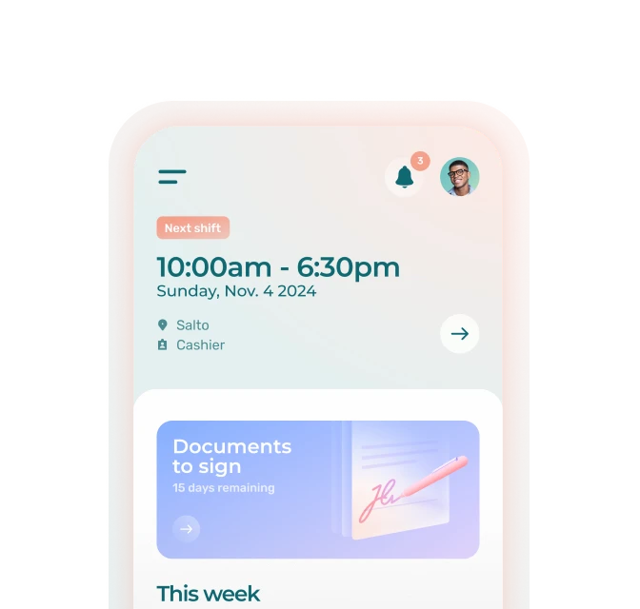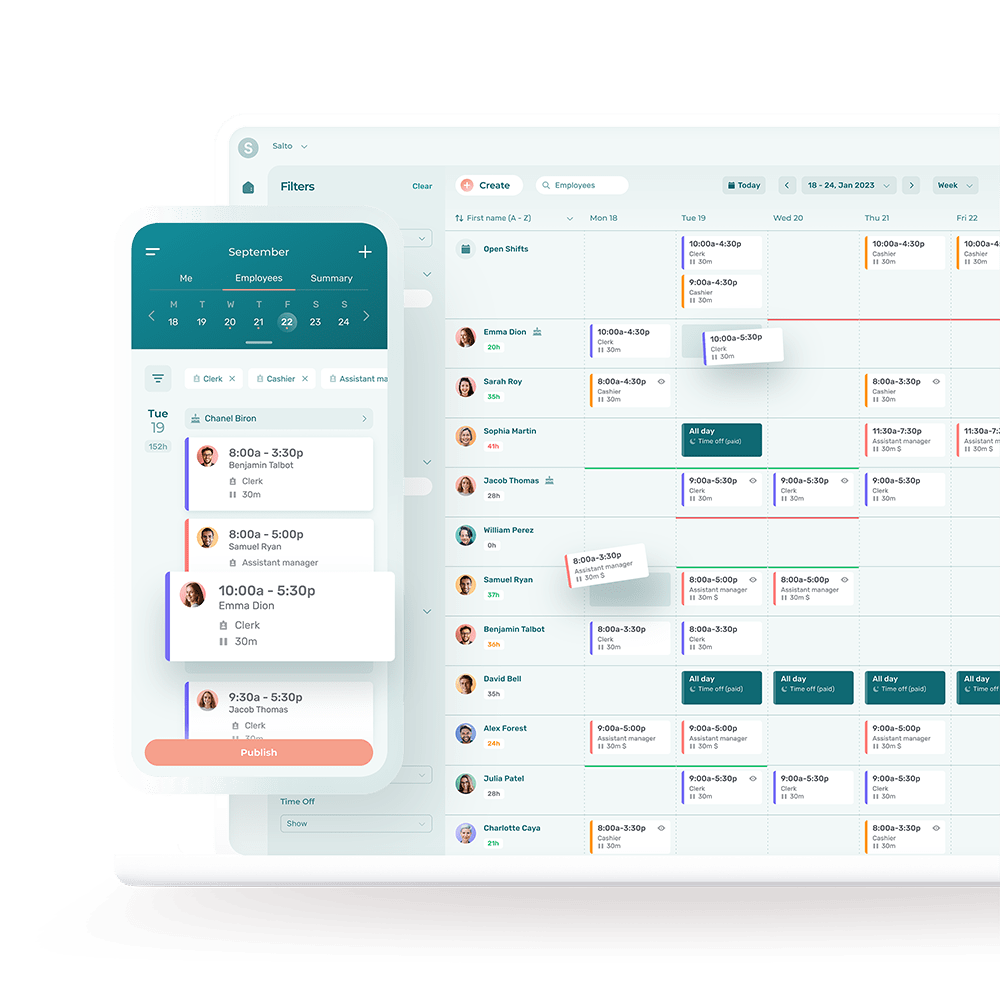For establishments such as hotels, which have to be open 24/7, managing night schedules can be a bit of a headache.
You need to not only plan for the right number of employees, but recruit people who are willing to work nights. This can be quite the challenge, especially in a labor shortage. Nevertheless, night shifts are necessary to keep the company up and running.
To make sure all goes according to plan, it’s important to develop simple, effective management methods that will help you secure a sufficient number of workers at key moments, including night shifts.
What Exactly Is a Night Shift?
Night shifts generally refer to hours worked between 11 p.m. and 5 a.m. the following morning. However, they can start or end earlier, according to company needs.
Night shifts can take different forms, such as:
- Evening shifts: between 4 p.m. and midnight
- Closing shifts: between 9 p.m. and 3 a.m. (or later) the following day
- Graveyard shifts: between 11 p.m. and 5 a.m. the next day
Hotels sometimes have to have night shifts in order to continue operating. For example, some resorts always need a person at the front desk to assist guests arriving late or requiring nighttime assistance.
Some hotels also have a bar or restaurant that can stay open until the small hours. Managers need to make sure they have enough employees to serve customers during these shifts.
What Are the Pros and Cons of Night Shifts for Employees?
Of course, night shifts aren’t for everyone. Some employees love them, others hate them. A night shift comes with pros and cons.
For example, the pros of a night shift include:
- Having a generally quieter, less busy shift
- Avoiding road traffic
- Earning night bonuses
- Having more free time during the day
However, for employees, there are also cons:
- Negatively impacting their sleep
- Having more boring or repetitive tasks
- Having to be present even during breaks
- Working alone
Before taking on a position that entails a night shift, employees should be aware of all the cons, or else they might quit in short order.
As a manager, you have a duty to keep your current and future employees well informed of the pros and cons.
How Do You Make Night Shifts Attractive to Employees?
Many managers struggle to recruit employees for night shifts. If you’re one of them, there are solutions you can put in place to make your recruitment and management easier.
For example, you can offer your employees a night premium. Raise their hourly wage for hours worked between 11 p.m. and 6 a.m., or offer a fixed amount for each shift worked, for example.
You can also use rotating night shifts to distribute working hours more fairly among your team members. This way, each employee will be required to work a night shift from time to time.
How Do You Set Up a Hotel Night Schedule?
1. Examine Your Labor Needs
The first step to creating your schedule is to assess your needs, which can vary significantly depending on the size of your establishment and the type of service you offer.
Here are a few questions to ask yourself to better determine your needs:
- Does a maintenance employee need to be on site at all times?
- Is one receptionist enough to handle customers at night?
- What tasks need to be carried out during the night to keep things running smoothly (washing sheets and towels, for example)?
- Starting at what time of day does it get slower?
- Which services must be maintained overnight?
Most hotels will be able to keep their staff to a minimum by having just one receptionist. On most days, only a few customers check in at reception or need help between 11 p.m. and 5 a.m.
You can also have an employee on call to avoid needing a continuous onsite presence. This is common in smaller establishments.
2. Determine How to Allocate Night Shifts
Since night shifts can be harder because of employees’ work hours, loneliness or repetitive tasks, it’s essential to choose the right employees to fill them.
In most cases, your employees will need to have a strong sense of autonomy, as they will be working on their own. They’ll also have to use their judgment and critical thinking skills to find solutions to any problems that arise.
So make sure you choose experienced employees or provide the right training so that your employees have all the tools and knowledge they need to carry out their responsibilities effectively.
You can also choose to have employees specifically dedicated to night shifts, so they can keep a regular routine.
3. Facilitate Communication Between Teams Working Day and Night Shifts
Adopt business messaging software to make communication easier between your different teams. This way, if a night employee needs to leave a message for the day crew, they can do so using a professional tool, rather than leaving a paper note that might get lost or ignored, for example.
An official tool will let you communicate with your night crew more easily and securely.
Most scheduling software also come with a professional messaging system so you can consolidate all your management tasks in one place, from schedule management and time tracking to employee communication and HR management.
4. Draw Up the Schedule in Advance
To give your employees greater flexibility and help them strike a healthy work-life balance, don’t be last-minute with work schedules.
Make sure you share the schedule as early as possible and allocate the different shifts in a way that respects your employees’ preferences and availability.
To stay organized, use scheduling software or free work schedule templates to streamline all your management tasks and lower your workload. This way you can create and share schedules with your employees both quickly and efficiently.
Specialized software will also enable you to collect valuable data to better plan your recruitment or evaluate your labor costs, for example.
5. Make Your Employees’ Well-Being a Priority
Night shifts are not easy. But as a manager, you can equip your employees properly in order to prevent night shifts from being an irritant.
To help employees stay active during their night shift, draw up a to-do list that will get them moving (if possible). And don’t hesitate to have regular one-on-ones with them to make sure everything’s going smoothly. You’ll be able to answer their questions and hear their suggestions regarding how to make their night shifts more dynamic and interesting.
Don’t forget to recognize your employees’ work. Remember to thank them for their efforts and highlight their achievements to boost their motivation.
Don’t hesitate to include tips in your training to help your employees adapt to night shifts. Here are a few examples:
- Avoid consuming caffeine too late in the night, otherwise it can affect your sleep cycle, since caffeine can remain active for 6 to 8 hours.
- Make sure you get enough sleep before your shift begins by planning your activities carefully.
- Stay well hydrated throughout the night shift.
- Avoid sugar-rich foods and opt for more balanced meals.
- Get some exercise after your night shift so that you’ll get a good night’s sleep.
The Key to Better Night Schedules
Don’t hesitate to work a few night shifts in order to set an example for the rest of your team. This will also help you better understand what these shifts involve and create your schedule accordingly.
Happy planning!











